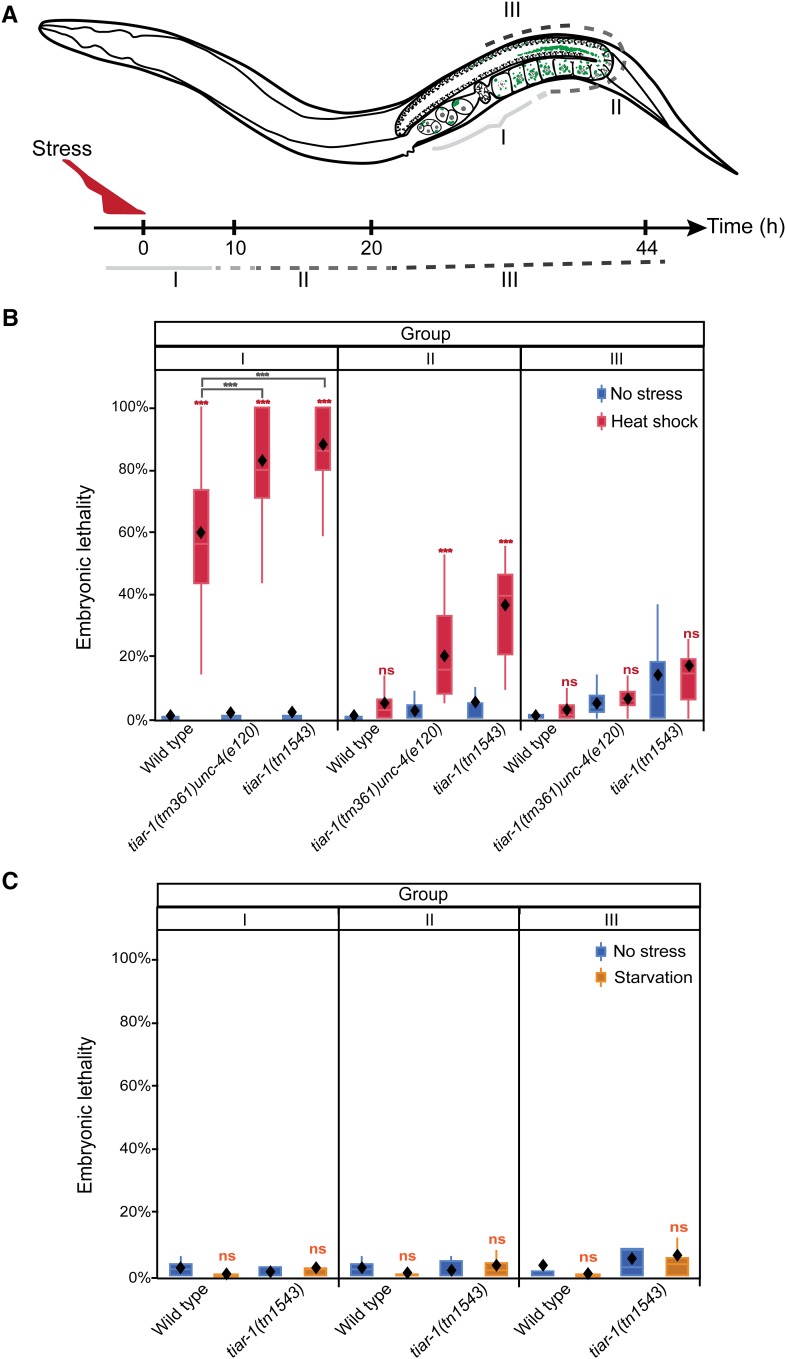Figure 8.
tiar-1 protects embryos and germ cells from heat shock. Wild-type and tiar-1(0) young adult hermaphrodites were exposed to heat shock (31° for 3 hr), starved (4 hr), or kept at 20° on seeded plates as control (no stress). After stress, these animals were recovered to 20° on a seeded plate. Then their progeny were sorted into three groups: I) embryos that had been fertilized before or during stress, II) embryos that were produced shortly after stress, and III) embryos that were produced long after stress. (A) Scheme representing how the groups of embryos were assigned (see Materials and Methods). Embryonic lethality was quantified for all groups after heat shock (B) and starvation (C). Embryos not hatching within 24 hr of being laid were considered inviable. The graphs show the data obtained from three independent replicates. The boxes represent the 25–75% interquartile range, the diamonds the mean value, and the whiskers extend from the upper to the lower values. The *** (P < 0.001) and ns (nonsignificant) symbols placed on top of the boxes are comparisons between no-stress and stress groups, whereas the ones placed above them are comparisons between the stress groups. Least square means, Tukey HSD test.

